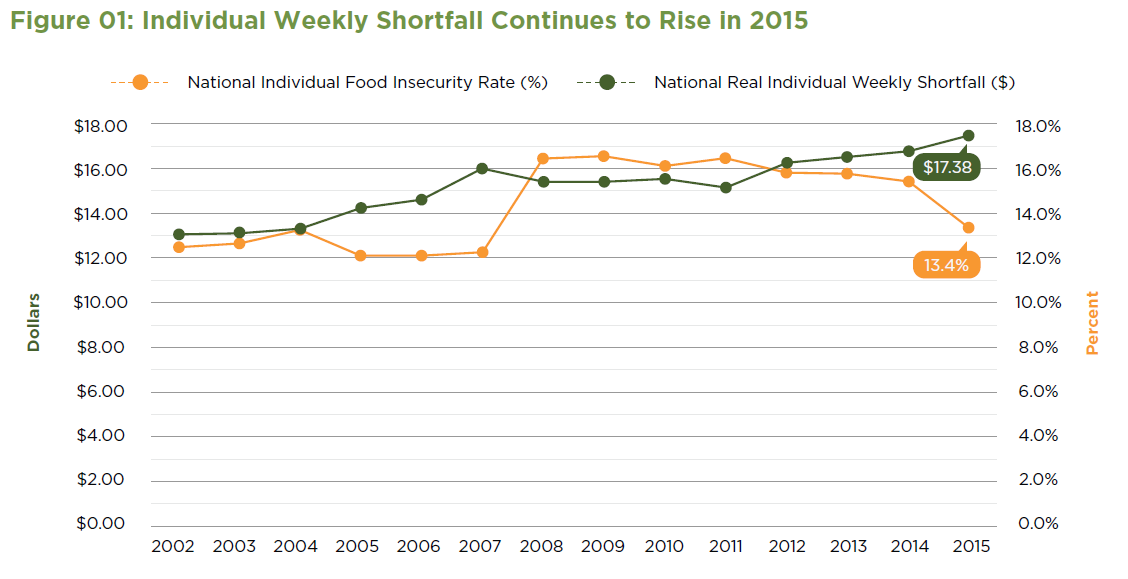November 1, 2017- I was recently interviewed by Bob Kinzel of Vermont Public Radio about the reality at food pantries in Vermont and the disconnect between a 2.9% unemployment rate, declining food stamp caseloads and increased use at food pantries and meal sites across the state. You can listen to the full interview here.
This disconnect exists because while more people are employed and incomes for some are rising, many Vermont families still can’t make ends meet week-to-week. Historical data backs this up. The U.S. Census Bureau tracks the “individual weekly shortfall.” In 2002, people on average had about $13.00 less than they needed per week to meet basic needs. Today it is $17.35 and has been rising steadily since 2011, despite the fact that the food insecurity rate has been slowly decreasing (see Figure 01).

Figure 01: Food Insecurity Rate and Individual Weekly Shortfall from Feeding America’s Map the Meal Gap 2017: http://www.feedingamerica.org/research/map-the-meal-gap/2015/2015-mapthemealgap-exec-summary.pdf
This means that the cost of living is rising faster than incomes, and families are looking for ways to make ends meet. One of those ways is visiting a food pantry or meal site to cut down on food spending. Federal nutrition benefits are not filling the gap. In Vermont 35% of people who are food insecure and visit food pantries don’t qualify for federal nutrition benefits (3SquaresVT), and probably few other public benefits (Feeding America’s Map the Meal Gap 2017).
These statistics are also confirmed by the volunteers who show up every day at the Foodbank’s 215 partner food shelves and meal sites around the state. More working people are coming in. There are as many reasons as there are people – loss of hours at work, medical bills, car repairs or a rent increase. Without some kind of financial cushion, many of us are just one event away from having to make some scary trade-offs.
The idea that if you work hard in school and then at a job, you will then be rewarded with the ability to support yourself and raise a family seems like an irrelevant relic of the past. While businesses and government focus on cutting costs, those “costs” are the wages and supports that made success possible for the many ordinary people who now don’t see anyone looking out for their interests. Charitable food helps a family get through the week. We need families to thrive for the long term.
I encourage everyone consider what you can do to create lasting opportunity for your neighbor. In the short term I encourage you to:
1) Talk with friends and neighbors about hunger issues in your community
3) Give time or money to the Vermont Foodbank or your local food shelf
In the longer term, support businesses that clearly are building capital in the community as a whole and consider the importance of government and nonprofit programs in creating educated, physically and mentally healthy citizens ready to work and contribute to a community where all can thrive.
